You don't have to be excellent at RF to be a good WiFi engineer. But you do need to understand the basics.
FREQUENCY
RF Frequency is a electromagnetic wave using AC (Alternating Current).
Just as the name implies, "frequency", its something that happens over and over and over again. It is very frequent, consistent, and repetitive.
There are different types of frequency; light, sound and in our case radio frequency (RF).
"Frequency is the number of times a specified event occurs within a specified time interval. A standard measure of frequency is hertz (Hz)" - The CWNA definition of frequency v106
This specified event mentioned in the CWNA Study Guide is the cycle.
CYCLE
"An oscillation, or cycle, of this alternating current is defined as a single change from up to down to up, or as a change from positive, to negative to positive." - The CWNA definition of cycle v106
Lets look at a few examples of a Cycle.
Example 1 - (1) Cycle
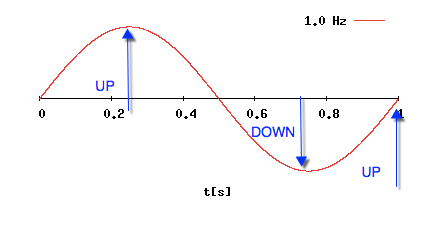
One cycle, specified event, is measured 1 second in time which equals 1 Hz. As the CWNA mentioned, "alternating current is defined as a single change from up to down to up, or as a change from positive, to negative to positive"
Example 2 - (5) Cycles
Five cycles, specified events, measured 1 second in time which equals 5 Hz.
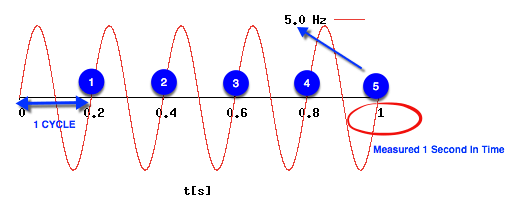
We are dealing with simple math - 1 and 5 cycles per second. Imagine for a moment 2,400,000,000 / 5,000,000,000 billion cycles in 1 second. Thats a lot of cycles, eh ? That is the number of cycles 2.4 GHz and 5 GHz (WiFi) uses to transport data from one radio over the air to another radio.
High frequency simple means there are more cycles per second.
Example 3 - Low and High frequency example
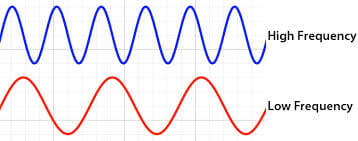
So — Remember —- Frequency is simply something that repeats itself over and over again. It is measured in cycles per seconds. The more cycles per second, the more frequency or referenced as higher frequency.
WAVELENGTH
"Wavelength is the distance between similar points on two back-to-back waves." - The CWNA definition of Wavelength v106
RF Waves can be measured at different points. In the below example, reference #1 is the most often way wavelength is measured.
Example 4
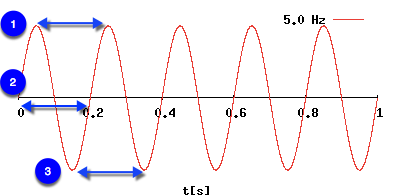
AMPLITUDE
"Amplitude is the height, force or power of the wave" - The CWNA definition of Amplitude v106
What is important to remember — frequency, cycle and wavelength remain constant, however, the hight of the wave form is dynamic based on the power of the wave. The higher power, or amplitude, the higher the wave form peeks. The lower the power, or amplitude, the lower the wave form peeks all while frequency, cycle and wavelength remain the same.
Example 5 - Amplitude shown by the hight or peeks of the wave form.
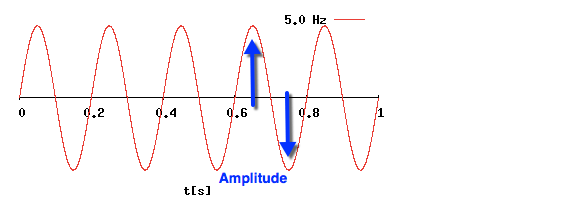
PHASE
Phase is the same frequency, same cycle, same wavelength, but are 2 or more wave forms not exactly aligned together.
"Phase is not a property of just one RF signal but instead involves the relationship between two or more signals that share the same frequency. The phase involves the relationship between the position of the amplitude crests and troughs of two waveforms.
Phase can be measured in distance, time, or degrees. If the peaks of two signals with the same frequency are in exact alignment at the same time, they are said to be in phase. Conversely, if the peaks of two signals with the same frequency are not in exact alignment at the same time, they are said to be out of phase." - The CWNA definition of Phase v106
Example 6
Below is an example of 2 wave forms 90 degree out of phase.

"What is important to understand is the effect that phase has on amplitude when a radio receives multiple signals. Signals that have 0 (zero) degree phase separation actually combine their amplitude, which results in a received signal of much greater signal strength, potentially as much as twice the amplitude. If two RF signals are 180 degrees out of phase (the peak of one signal is in exact alignment with the trough of the second signal), they cancel each other out and the effective received signal strength is null. Phase separation has a cumulative effect. Depending on the amount of phase separation of two signals, the received signal strength may be either increased or diminished. The phase difference between two signals is very important to understanding the effects of an RF phenomenon known as multipath, " - The CWNA definition of Phase v106
Example 7
Below is an example of 2 wave forms 180 degree out of phase.
"If two RF signals are 180 degrees out of phase (the peak of one signal is in exact alignment with the trough of the second signal), they cancel each other out and the effective received signal strength is null." The CWNA definition of Phase v106
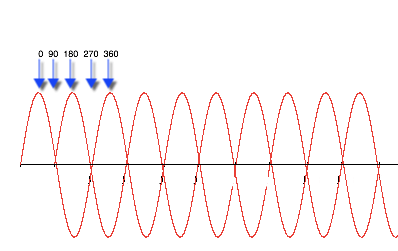
It's always important to revisit the basics. A firm understanding of RF is an important building block to become a good WiFi engineer!




